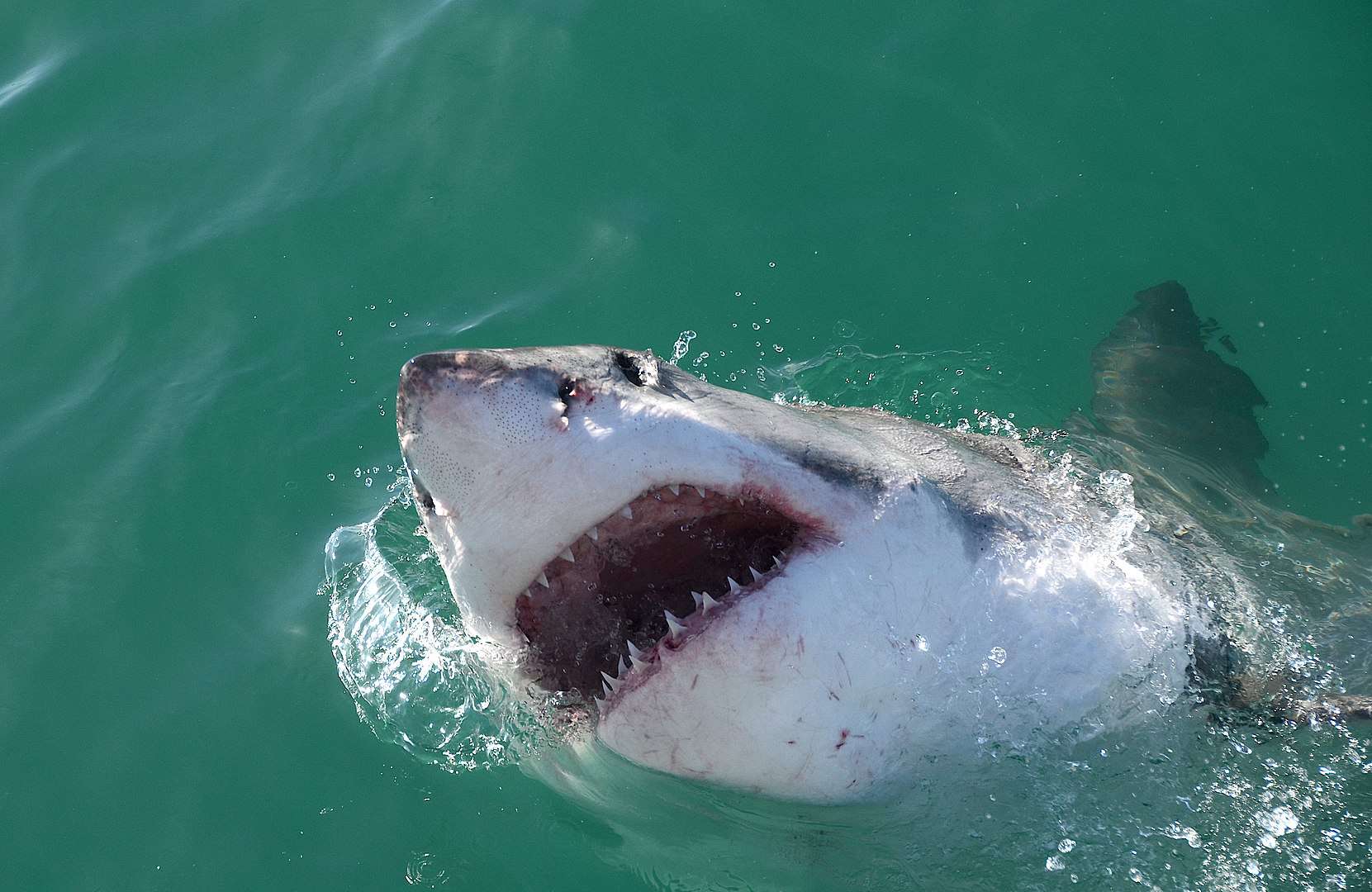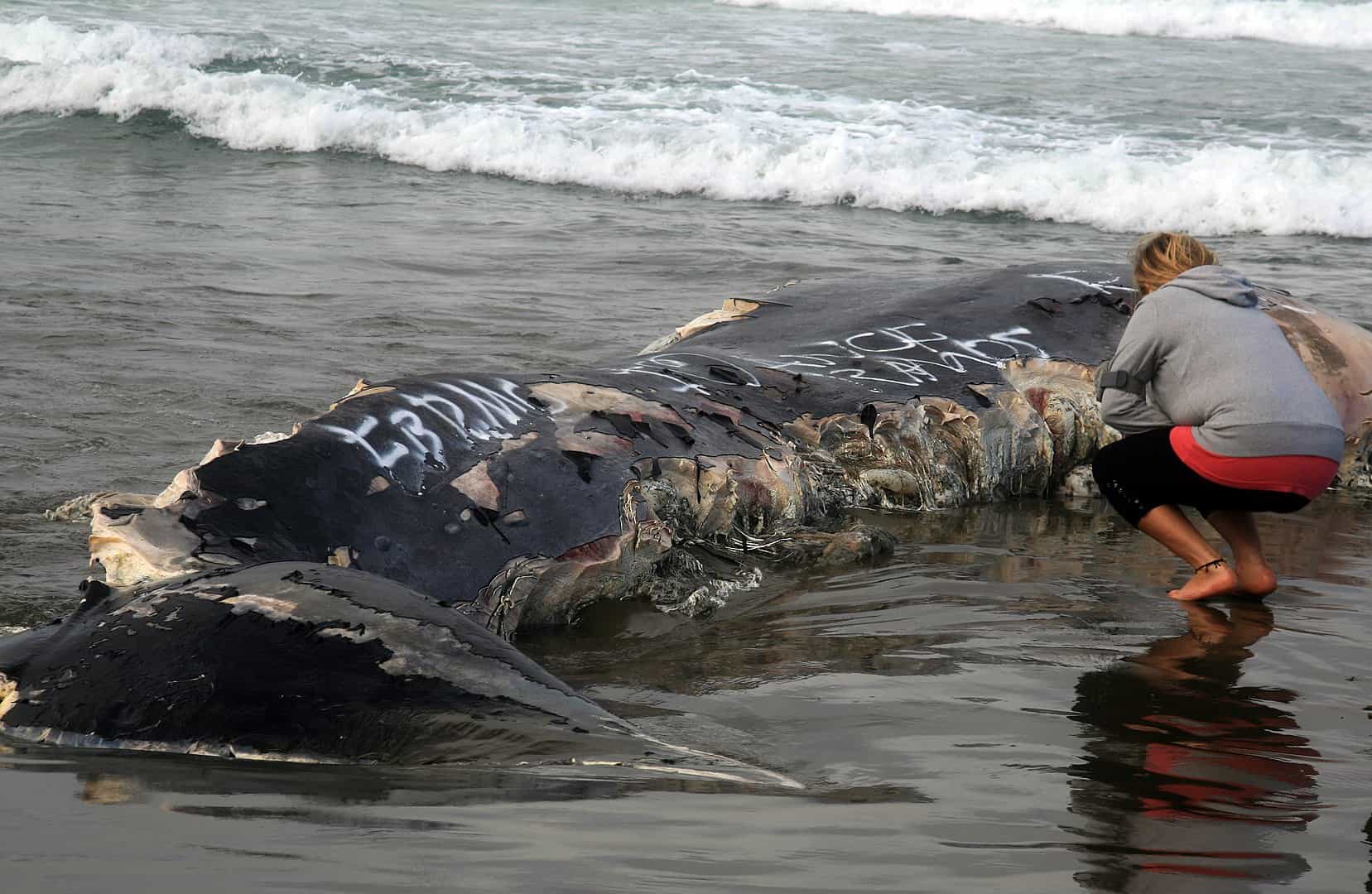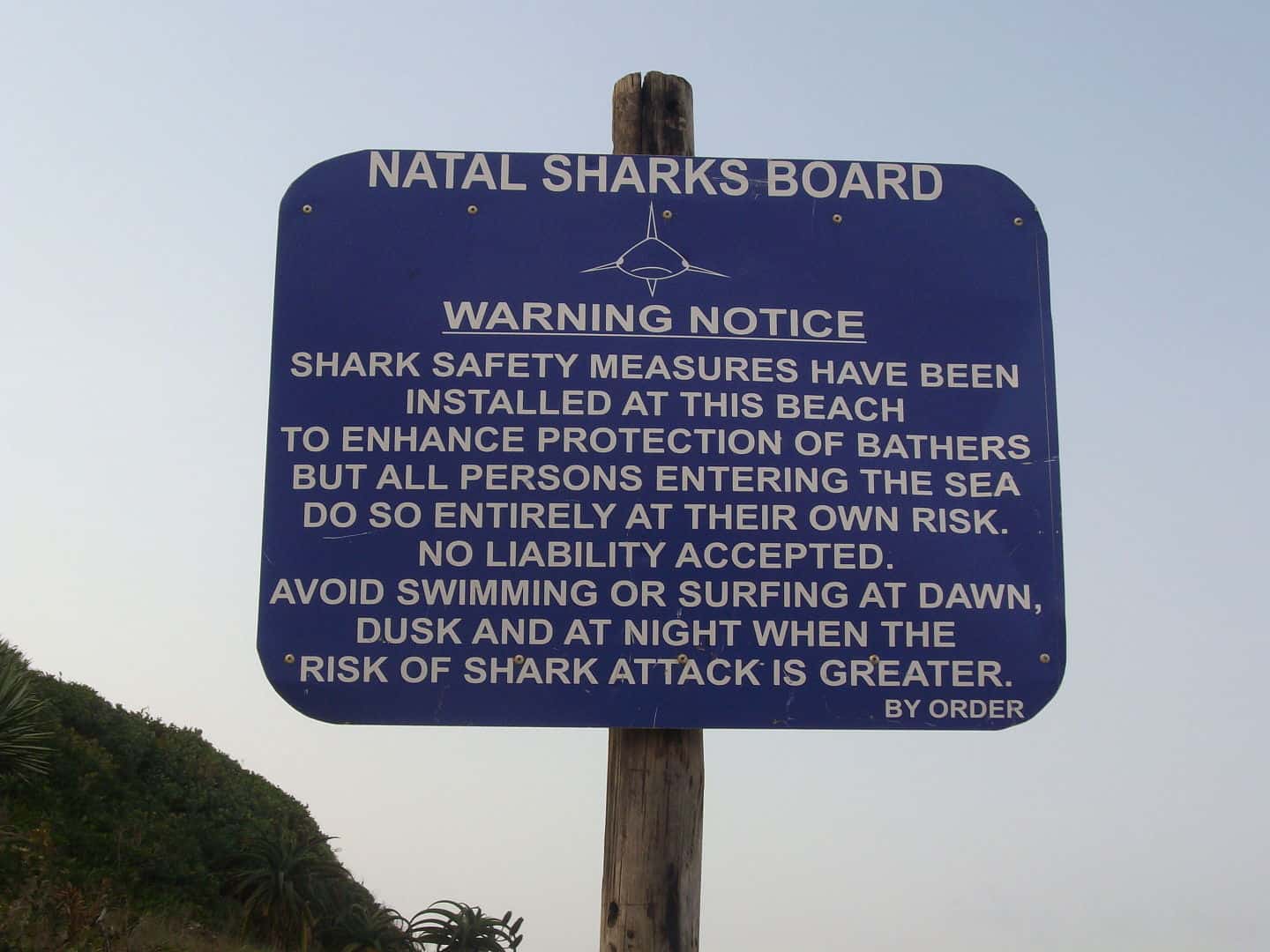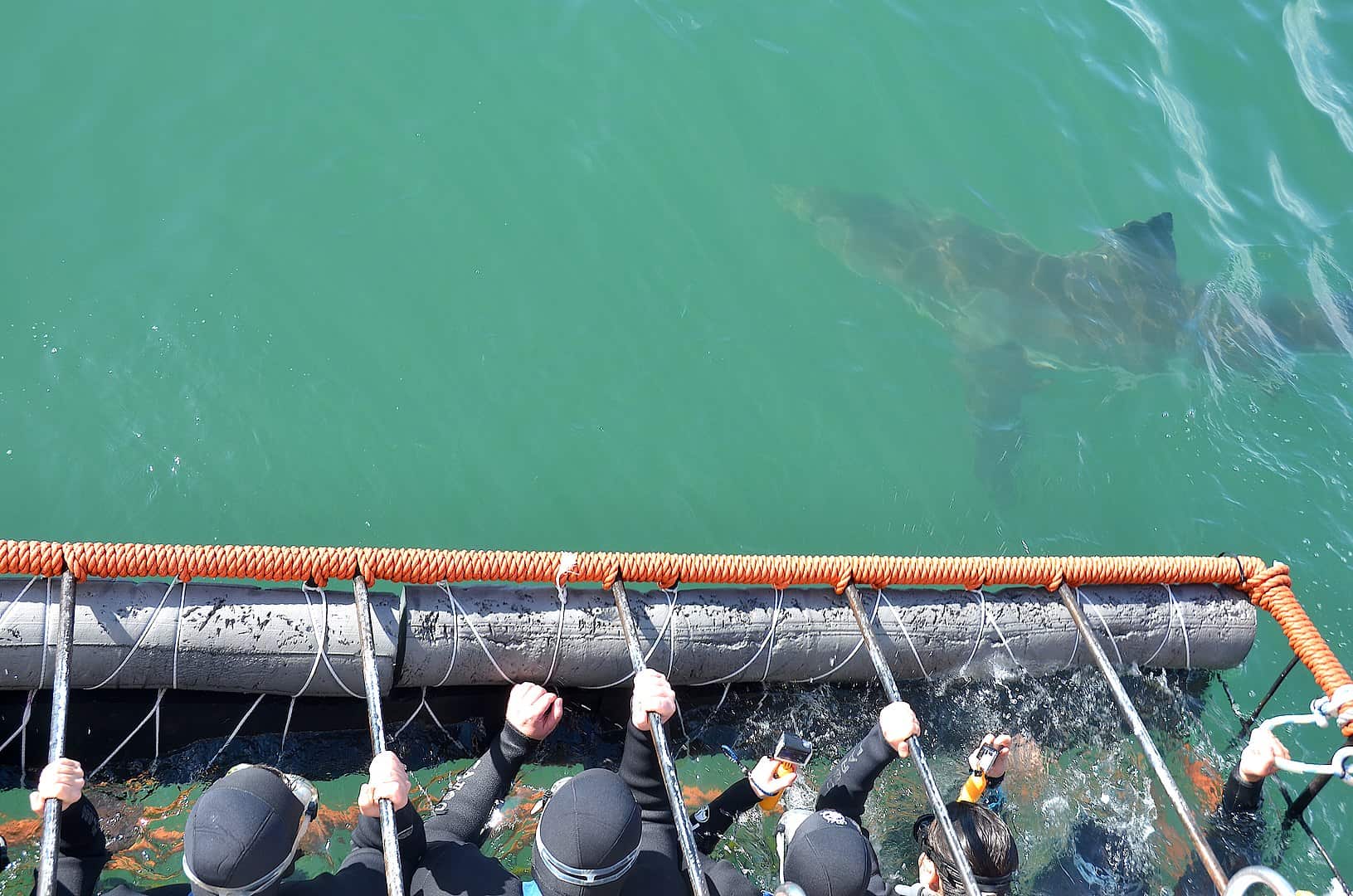
The ocean has many predators, but the great white shark always comes to mind when you see or read the word “predator.” Popular fiction has cemented the great white shark in people’s minds, but a few movies or TV series don’t portray them in a realistic way. Perhaps they didn’t read enough great white shark facts in their research?
For example, in the movie “Jaws,” humans are actively hunted and attacked by a great white shark. In real life, they would never do that. Sharks are really not that interested in hunting humans. The movie also shows the shark swimming backward and rolling its eyes. They cannot do both in real life. Despite its inaccuracies, the film turned out to be very popular.
The great white shark can be found mostly in cool waters throughout the world’s oceans. Nope, you won’t find them in streams or rivers. In addition, great white sharks have such a keen sense of smell that they can detect a seal colony from a distance of two miles. And consider this: even if there was only one drop of blood in a hundred liters of water, a great white shark would detect it! Now, we call that super smell! Learn more about this amazing animal with our collection of 40 great white shark facts below.
- Scientists estimate the global population of the great white shark to be around 3,500.
- Great white sharks can grow up to 6 meters long for females, and 4 meters for males.
- Great white sharks have an average weight of around 2,000 kilograms.
- They can also travel through the water at speeds of up to 25 kilometers per hour.
- The average lifespan of a great white shark is around 70 years.
- Scientists once thought great white sharks came from a line of prehistoric, aquatic fish called the megalodon.
- Today, their oldest known ancestors go back to prehistoric mako sharks from between 60 and 43 million years ago.
- Prehistoric sharks that could pass for modern great white sharks first appeared between 8 and 5 million years ago.
- Their evolution adapted to prey on marine mammals starting around 6 million years ago.
- The first true great white sharks first appeared around 1 million years ago.
- French naturalist Pierre Belon may have first described them in 1553.
- In 1554, French physician Guillaume Rondelet identified the great white shark as the fish in the Biblical story of Jonah.
- Swedish doctor Carl Linnaeus first properly described them in his 1758 10th Edition of Systema Naturae.
- He also classified them as amphibians, and gave them their first scientific name, Squalus carcharias.
- Sir Andrew Smith properly classified them in the 19th century as fishes, and gave them their modern name, Carcharodon carcharias.
- Other names for the great white shark include Great White, White Shark, and White Pointer.
- Together with its relatives, they make up the mackerel shark order, Lamniformes.
- International organizations consider the great white shark to be a vulnerable species.
- Members of the species live in coastal waters in all oceans around the world.
- No aquarium in the world today keeps a great white shark in captivity.
Great white sharks constantly migrate across the oceans.
This means that while the sharks normally live in coastal waters, they also frequently visit and pass through deeper waters. Scientists don’t completely understand why the sharks constantly stay on the move, but they do have ideas.
One common theory goes that the sharks simply follow their prey wherever they go. Evidence for this lies in the fact that Great Whites inevitably show up where their prey gathers in large numbers.
Another theory says that the Great Whites’ mating rituals drive their movements instead. This need for common migration also becomes the reason why no aquariums have great white sharks. Every time they’ve tried to keep one for too long, the shark eventually killed themselves either by refusing to eat or by hitting the walls to try and escape.
Scientists have made short-term efforts to keep them in captivity, though.
They managed it for the first time in 1986, at SeaWorld San Diego, keeping the shark for 16 days before releasing it back into the wild.
Scientists in Monterey, California, also tried it in 2003, and even managed to feed the shark before releasing it after 5 days. They repeated this feat a year later when they caught a female great white shark and kept it in the Outer Bay Exhibit in Monterey, California, for 198 days.
Over the following years, the scientists at Monterey continued to catch individual sharks, studying them in captivity for short periods before releasing them into the wild. They ended the program in 2011, however, with the scientists deciding they had nothing more to gain by keeping Great Whites in captivity. Their research would instead continue in the wild, studying the sharks in their natural habitat.
Great white sharks also have a distinctive appearance.
In particular, they have white bellies, which contrasts sharply against the grey color of their backs. This distinctive coloration, along with the great white shark’s large size and heavy build, gives them their name.
Scientists believe the Great White’s coloration results from an evolutionary development to make them better predators. Specifically, prey swimming under the sharks can’t see them from below, as their white bellies blend with the sunlight above.
Prey swimming above the sharks can’t see them either, as their dark upper bodies let them blend with the dark depths below. Rarely, however, these sharks develop a condition called Leucism, where their whole bodies turn completely white.
The great white sharks have a powerful bite.
Scientists in 2007 used a combination of CT scans to model a Great White’s skull, which they then used in a series of computer simulations. They based the model on proportions that a Great White weighing 3,342 kilograms would have. From there, they discovered a Great White could have a bite force of up to 18,216 newtons.
In contrast, an adult human’s maximum bite strength averages around only 285 newtons. That said, scientists point out that sharks, like humans, don’t usually bite at their strongest.
In fact, sharks, in general, prefer to tear their prey apart into smaller pieces before eating them. That’s also the reason why sharks shake their heads after biting down on their prey, as it allows their saw-like teeth to tear their prey’s flesh apart.

Various claims exist about very large specimens of the great white shark.
Officially, the biggest Great White ever caught involved a female measuring 6.1 meters long, from St. Lawrence’s Gulf off Canada’s Prince Edward Island in 1988. However, older records claim people have caught bigger Great Whites in the past.
Other people have also claimed to have caught bigger Great Whites in more recent years. For instance, a claim going back to the 1870s involves a Great White measuring 10.9 meters long getting caught in Australian waters. Scientists, though, dispute this, noting inconsistencies with the old records, as well as inaccurate ways of measurement used at the time.
In 1987, though, a Great White caught off Malta supposedly measured over 7 meters long. Scientists admit that photographic evidence makes it possible, but need more evidence than what’s available to confirm it as bigger than the 1988 specimen.
Great white sharks have unique evolutionary adaptations.
All sharks have organs called Ampullae of Lorenzini that allow them to sense weak electrical pulses in the water. They use these pulses to navigate in the open ocean, by sensing the Earth’s magnetic field. They also use them to hunt prey, by sensing their body’s electrical pulses through the water.
Great Whites have especially sensitive ampullae, allowing them to sense pulses as weak as one-billionth of a volt. This allows them to sense even something so precise as their prey’s heartbeat. Great whites also have a unique immunity to heavy metal poisoning. A 2012 study of great white sharks from waters polluted with arsenic, lead, and mercury, show that despite high levels of heavy metal in their blood, the sharks remained unaffected.
Scientists today still aren’t sure how Great Whites developed such an ability or its other benefits.
Some scientists even think they’re neither warm nor cold-blooded.
This comes from the Great Whites’ possession of the rete mirabile, a special network of veins and arteries on both sides of their body. The sharks use them to transfer heat produced by their muscles into their veins, which sit right next to their arteries. This closeness then allows the heat to transfer to the arteries and the blood inside them.
This then allows Great Whites to keep organs like the stomach up to 14 degrees warmer than the surrounding water. At the same time, other organs like the heart and gills stay the same temperature as the water around them.
Overall, this allows Great Whites the ability to control their core temperature, allowing them to conserve energy when not hunting. But when they hunt, they can move faster than normal, allowing them to hunt faster and more agile prey, like seals and sea lions.
Great white sharks have a complex society of their own.
So much so, that scientists have compared clans of Great Whites to packs of wolves on land. These clans usually number around four members, with a few clans sometimes having up to six members. These clans also have a fixed hierarchy, with females on top, followed by the bigger males, and then the smaller males.
Clans also don’t limit their members to relatives, and in fact, could change membership on an annual basis. Sharks that have stayed part of a clan for longer also count much higher in the hierarchy compared to newer members.
Scientists have also observed that Great Whites prefer to use ritual actions to settle disputes, instead of fighting each other. That said, fights do happen, especially when a Great White swims too close to another Great White.
They also always eat meat.
That said, even as carnivores, Great Whites actually still have quite a diverse diet. When it comes to fish alone, they hunt prey as diverse as rays, tuna, and even other sharks. Great Sharks hunting sea mammals have an especially diverse diet, including but not limited to dolphins, porpoises, sea lions, seals, sea otters, and even whales.
Scientists have also observed them hunting seabirds, especially when they fly too low over the sea. Great white sharks have also hunted sea turtles. Scientists have also noted that Great Whites’ preferred prey varies on their age. Younger sharks prefer easier prey, such as fish and seabirds. Older sharks, though, have the strength to go after sea mammals. Also, Great Whites don’t actually hunt whales, as much as they scavenge their corpses when they die.

They are one of the most successful predators in the world.
So much so, that scientists know of only one animal in the world that actually preys on great white sharks: the Killer Whale. They even have a special way of taking Great Whites down, involving holding the shark in place with their mouths.
As sharks need to constantly swim to breathe, Great Whites typically suffocate and die in just 15 minutes. Even then, the killer whale doesn’t actually eat the whole shark, instead tearing them open to get at their liver. Scientists and fishermen have actually found hundreds of dead great white sharks in the wake of killer whales, their lifeless bodies missing their livers.
When hunting seals, great white sharks exhibit breaching behavior.
This involves the shark lunging at the surface at high speed, up to 40 kilometers per hour, in fact. This allows them to catch the seal with their jaws without giving them a chance to escape, with the shark’s speed outright causing them to breach the surface.
It’s also very difficult for scientists to properly document, as there’s no telling when a Great White will breach. It can also get very dangerous, like what happened in 2011, when a Great White breached near a research ship carrying seven people. The speed and force of the shark breaching actually caused it to land inside the ship, panicking everyone on board.
The great white shark’s mating behavior largely remains a mystery today.
In fact, scientists only first observed Great Whites mating in 1997, and only properly documented it in 2020. They do know that Great Whites only become sexually mature at the age of 26 for males, and the age of 33 for females.
Mating takes place in coastal waters, away from the Great Whites’ usual feeding grounds. Scientists have never witnessed the sharks give birth, but they have seen and studied pregnant sharks. This led them to discover that sharks don’t lay eggs, instead carrying and birthing live young.
They estimate that female Great Whites stay pregnant for up to 11 months and can birth up to 14 young at a time. Scientists have also discovered that while in the womb, Great White fetuses attack and feed on each other even before they are born.
Great white sharks have attacked more humans than any other shark species.
Records point to Great Whites attacking humans at an average of 80 attacks per year from 2015 to 2020. Despite what popular fiction may say, the sharks don’t actually mistake humans for seals. They just treat us as potential prey like any other animal in the water. In fact, great white sharks have never actually eaten humans, with scientists noting how they actually let humans go after one bite. Their studies have led them to think that Great Whites see us as simply too bony. This especially proves the case when comparing humans with sea mammals, like seals and sea lions.
However, that’s not to say that people don’t die from Great Whites attacking them, because they do. But it’s not because a Great White ate them, as much as from blood loss, shock, and organ damage resulting from one’s bite.

They also sometimes attack boats.
It’s rare, but it does happen, with 108 confirmed reports of Great Whites attacking boats over the 20th century. Out of those 108, kayakers count for only 5, despite exaggerated horror stories of Great Whites deliberately targeting kayakers.
That said, Great Whites have attacked boats of up to 10 meters long, and literally bit through their hulls. They’ve also jumped onto boats, and knocked crew into the sea, much like what happened to a South African fishing boat in 1936. Scientists think that Great Whites attack boats out of confusion, from the unusual electrical pulses they pick up from them.
This inspired the Jaws franchise in the 1970s.
Both the 1975 film and the novel it adapted involve a great white shark attacking people near the fictional Amity Island off New England in the USA. The heroes must then both find a way to survive, as well as kill the shark before it leaves and attacks other places. The film became one of the most successful in history, but scientists have noted several inaccuracies.
For one thing, the Great White in the film aggressively hunts and attacks humans, when in reality, they will never do that. The shark also swims backward at one point, which they literally cannot do in real life. It also growls and rolls its eyes at another point in the film, which again, they don’t do in real life.
A common way to prevent shark attacks involves culls.
The idea behind a cull involves keeping predator populations under control, thus making it less likely they’ll attack people. Unfortunately, culling tends to kill indiscriminately, with culls in New Queensland, Australia, from 1962 to 2018, killing an estimated 50,000 sharks.
They also killed another estimated 84,000 marine animals, such as dolphins, seals, turtles, and even whales. This has angered environmentalists, who describe culling as brutal, inhumane, and devastating to the environment. Even more so, as the other animals killed in the culls also enjoy protected status, such as turtles, in particular.
Scientists have also condemned the practice, stating in 2014 that, based on statistics, culling hasn’t actually stopped or reduced shark attacks on people.
Tourists have participated in cage diving to see the sharks in their natural habitat.
This involves tourists going scuba diving inside a protective cage that keeps sharks from getting close to them. This then allows them to watch Great Whites swim and hunt without risking getting attacked themselves.
That said, scientists have warned of other dangers resulting from cage diving. In particular, they point out how cave diving organizers tend to dump chum in the water before a dive, to bait the sharks into coming closer.
Scientists warn that this could cause Great Whites to start associating people with food, and thus make attacks more common. Some organizers dismiss this, claiming that people get hit by lightning more than they get attacked by sharks. Others, though, have begun looking for alternative ways to gather sharks for cage diving purposes.

Commercial fishing rarely goes after great white sharks.
When Great Whites get caught, it’s done for specialty dishes, with their fins particularly sought after. Their bones and teeth also have value in traditional medicine, as well as handicrafts.
That said, most fishermen don’t deliberately go after Great Whites, with most commercial catches resulting from misidentification of a Great White as a Smooth-Hound Shark. Recreational fishermen actually catch more Great Whites than commercial fishermen, with the Great White counting as especially valuable game fish.
Both Australia and New Zealand officially consider the great white shark a protected species.
Australia placed them in protection in 1999, and even launched recovery programs in 2002 and 2013. This has made it illegal to kill or even catch Great Whites for commercial purposes and increased monitoring of the great white shark populations.
Ironically, despite enjoying protected status, Australia also regularly kills Great Whites as part of shark culling programs. As for New Zealand, they placed the great white shark under protection in 2007. And unlike in Australia, Great Whites and other sharks in New Zealand have no fear of getting killed in a cull.
Various American states have also placed the great white shark under protection.
California placed the great white shark under protection in 2013, with an estimated 2,400 Great Whites living in California waters as of 2014.
In 2015, Massachusetts also placed the great white shark under protection, and banned killing or catching them. The state also banned cage diving, as well as the deliberate feeding of the sharks, to minimize the impact of human activities on the sharks. That said, both states’ protection laws come with leeway and exception for special scientists to help them continue studying the sharks.
Was this page helpful?
Our commitment to delivering trustworthy and engaging content is at the heart of what we do. Each fact on our site is contributed by real users like you, bringing a wealth of diverse insights and information. To ensure the highest standards of accuracy and reliability, our dedicated editors meticulously review each submission. This process guarantees that the facts we share are not only fascinating but also credible. Trust in our commitment to quality and authenticity as you explore and learn with us.
